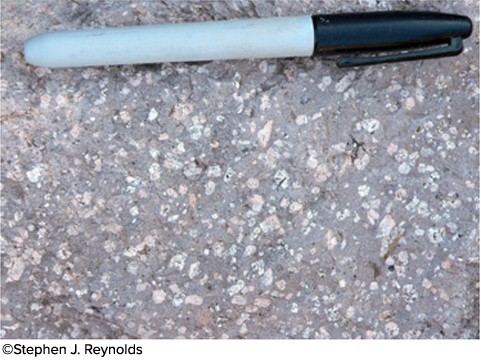African subsistence farmers are benefitting from the food and money provided by introduction of cash crops
a. True
b. False
Indicate whether the statement is true or false
False
RATIONALE: Although cash crops are important sources of revenue in these poor countries, excessive dependence on them, as with other commodities, can harm a country's economy. The income they bring often goes almost exclusively to already prosperous farmers and corporations. The prices they fetch are vulnerable to sudden losses amid changing world market conditions. The plants themselves are susceptible to drought and disease. Finally, they are often grown instead of food crops, and cash crops do not feed hungry people.
You might also like to view...
What does the texture of this rock indicate about its cooling history? The magma cooled
A. for a while at some depth and then rose to the surface where it finished solidifying. B. slowly in the presence of water. C. entirely at the surface. D. slowly under relatively deep conditions.
Which of the following is not a trigger to start air moving upward? a. Radiational cooling
b. Warm air rising along a frontal boundary. c. Unequal surface heating. d. Converging surface winds.
Answer the following statement(s) true (T) or false (F)
1. Beach sediments constantly move. 2. When the Moon is in the first- or third-quarter position, a spring tide will occur. 3. Ocean currents are caused primarily by the gravitational attraction between the Earth, Moon, and Sun. 4. The line that marks the contact between land and sea is called the Beach. 5. Sea stacks and sea arches commonly form in the same geologic environment. 6. The steep, rugged shorelines of the West Coast of the US commonly display depositional features. 7. A neap tide has the greatest daily tidal range (biggest change between high and low tides). 8. Generally there are 2 high tides and 2 low tides every day. 9. The only current that completely encircles the Earth is the Equatorial current. 10. Most places on Earth experience one high tide and one low tide each day. 11. A spring tide is characterized by a small tidal change; a neap tide is characterized by a large tidal change.
What is the minimum number of points needed to pinpoint the epicenter location of an earthquake, using the radius of a circle of possible points, as obtained from the lag time in arrival between a P wave and an S wave?
A) 2 B) 3 C) 4 D) 5 E) 6